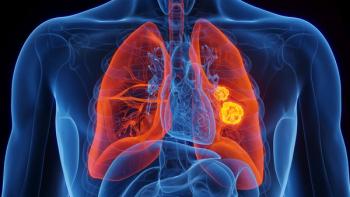
Estrogen Alone Decreases, Adding Progestin Increases Incidence of Breast Cancer in Postmenopausal Women
Despite the fact that menopausal hormone therapy with estrogen plus progestin is frequently used, its influence on breast cancer incidence and mortality has been debated, with discordant findings from prospective observational studies compared with randomized clinical trials.
Long-term follow-up results from 2 large, randomized, placebo-controlled trials in postmenopausal women showed that the use of estrogen alone as a menopausal hormone therapy decreased breast cancer incidence, whereas estrogen plus progestin increased breast cancer incidence. Both results were persistent after discontinuation of use, according to findings presented at the San Antonio Breast Cancer Symposium (SABCS), held December 10 through 14.
Despite the fact that menopausal hormone therapy with estrogen plus progestin is frequently used, its influence on breast cancer incidence and mortality has been debated, with discordant findings from prospective observational studies compared with randomized clinical trials, according to the researchers.
Earlier in 2019, a meta-analysis of 58 observational studies showed that estrogen plus progestin as well as estrogen alone were both associated with a significantly increased risk of breast cancer incidence.
The results from 2 Women’s Health Initiative (WHI) trials found different results. The analysis presented at SABCS updates earlier findings on breast cancer incidence and mortality in women randomly assigned to conjugated equine estrogens (CEE) plus medroxyprogesterone acetate (MPA), CEE alone, or placebo.
Postmenopausal women between 50 and 79 years of age with no prior breast cancer were enrolled in 1 of 2 randomized clinical trials at 40 US centers from 1993 to 1998. Participants with an intact uterus received CEE and MPA (8506 participants) or placebo (8102 participants) for a median of 5.6 years. Participants who had undergone a hysterectomy received CEE alone (5310) or a placebo (5429) for a median of 7.2 years.
After 16.1 years of cumulative follow-up, there were 520 incident breast cancers among those who received CEE alone. Compared with women who had received the placebo, those who had received CEE were 23% less likely to have been diagnosed with breast cancer and 44% less likely to die from the disease. These positive outcomes align with earlier findings from this trial during the intervention period.
After 18.3 years of cumulative follow-up, there were 1003 incident breast cancers among participants who received CEE plus MPA. Compared with women who received the placebo, those who received the combination therapy were 29% more likely to have been diagnosed with breast cancer. This outcome is aligned with earlier findings from the same trial. CEE plus MPA was also associated with an increased risk for death from breast cancer in the extended analysis, but this association did not reach statistical significance.
“In the 2 randomized, placebo-controlled WHI clinical trials involving 27,347 postmenopausal women, CEE plus MPA significantly increased breast cancer incidence, with these adverse effects persisting over a decade after discontinuing use,” said Rowan T. Chlebowski, MD, PhD, chief of the Division of Medical Oncology and Hematology at Harbor-UCLA Medical Center, in a statement. “And in contrast to decades of observational study findings, in the WIH trial, CEE alone significantly reduced breast cancer incidence and significantly reduced deaths from breast cancer, with these favorable effects persisting over a decade after discontinuing use.”
Chlebowski also noted that death from breast cancer is the most clinically relevant breast cancer outcome, despite the limitation that the breast cancer mortality analyses were not protocol-specified.
REFERENCE
Long-term Follow-up Shows Estrogen Alone and Estrogen Plus Progestin Have Opposite Effects on Breast Cancer Incidence in Postmenopausal Women [news release]. San Antonio, TX; released December 13, 2019. American Association for Cancer Research.
Newsletter
Stay informed on drug updates, treatment guidelines, and pharmacy practice trends—subscribe to Pharmacy Times for weekly clinical insights.
















































































































































































































